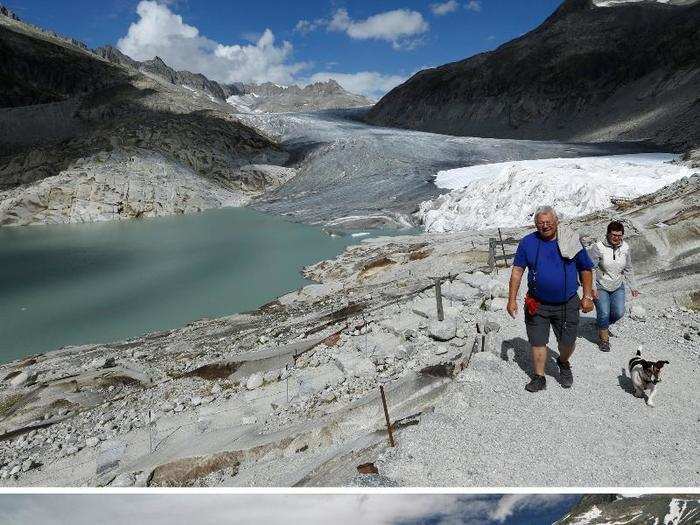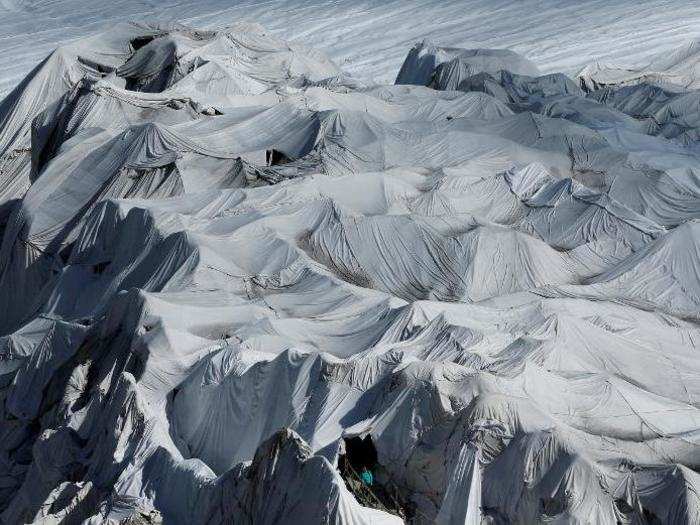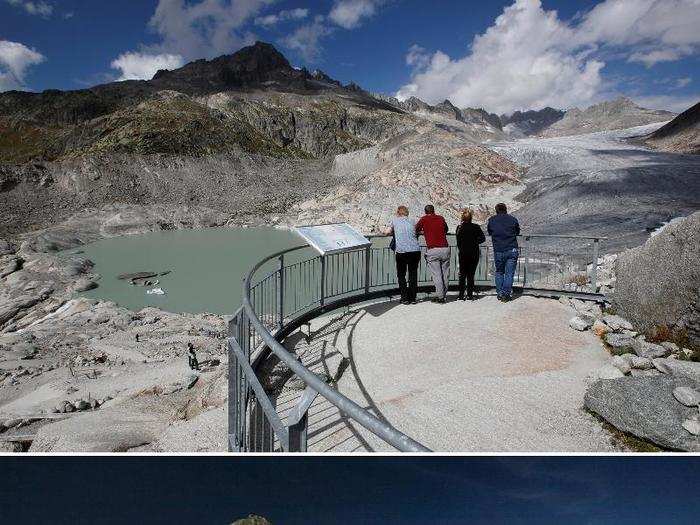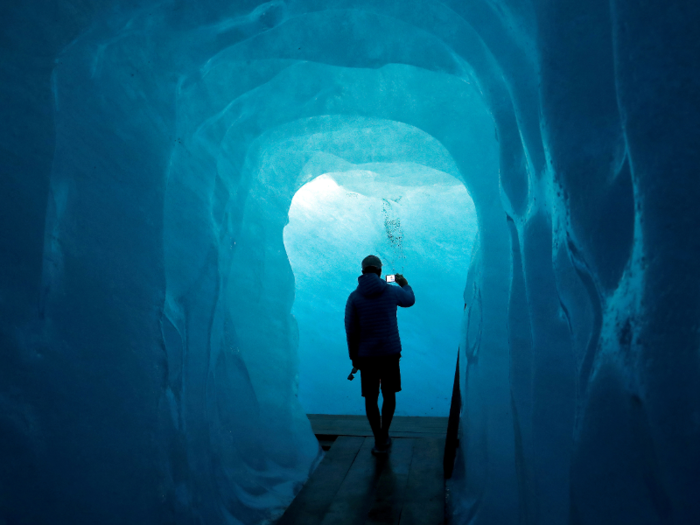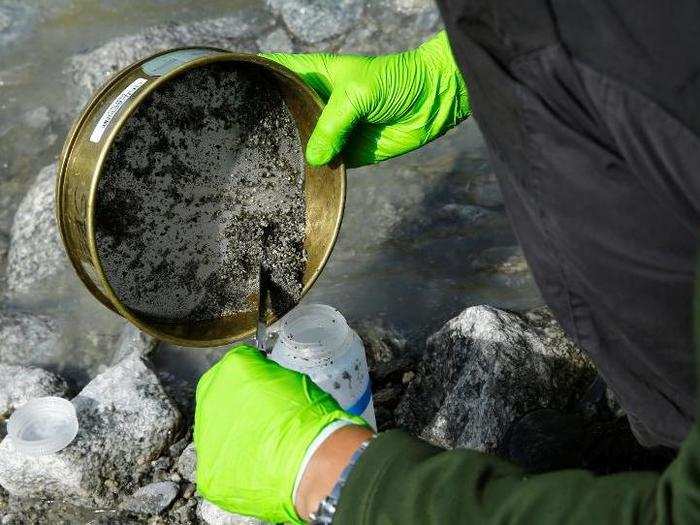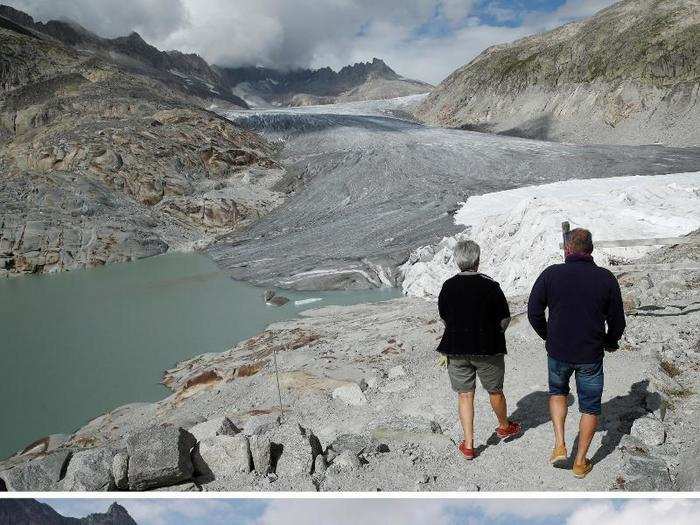Before and after photos show how quickly ice is disappearing on Swiss glaciers
The Rhone Glacier is located in Furka, a mountain pass in Switzerland. The top photo shows what it looks like now. On the bottom, a 2009 photo shows how much ice has vanished in the past nine years.
Popular Right Now
Popular Keywords
Advertisement

